H & K Stomach Tonic Bitters
Ashtabula
06 April 2014
![]() The H & K Stomach Tonic Bitters images and post content are from Matt Lacy from Austinburg, Ohio. He surprised me with these images that are outstanding. I am unfamiliar with the bottle so this is pretty darn exciting. Matt is also joining the board of the FOHBC as our Midwest representative. That is pretty darn exciting too! I took Matt up and searched for information and found yet another Mayor who put out a bitters.
The H & K Stomach Tonic Bitters images and post content are from Matt Lacy from Austinburg, Ohio. He surprised me with these images that are outstanding. I am unfamiliar with the bottle so this is pretty darn exciting. Matt is also joining the board of the FOHBC as our Midwest representative. That is pretty darn exciting too! I took Matt up and searched for information and found yet another Mayor who put out a bitters.
[from Matt] I thought I would take a break from the eagle flasks and post another very rare bottle and the even rarer end crate. This is a local bitters to me. H & K Stomach Tonic Bitters was made by Hendry and King who owned a drug store on Center Street in Ashtabula, Ohio. They were in operation for only 8 years from 1864 to 1872. King left in 1871 to lead the Ashtabula Colony west in hopes of establishing a new town which they did, King City, Kansas, presently known as Elyria, Kansas. Hendry followed in 1872 to establish a new drug store.
I was fortunate enough to obtain this example and the end crate from a local digger that dug it out of a honey dippers dump in the late 1970s.
I have heard that an example of this bottle exists with “Ashtabula Ohio” embossed on it. I have dug an embossed panel, but have never seen an example. I would be very interested in seeing one if anyone has any information. I am also currently looking to purchase any examples of this bottle that may be available out there. Please contact me if you know of any examples like this or with the town embossed on it.
Carlyn Ring and W. C. Ham list this brand twice in Bitters Bottles. Please note that ‘ASTABULA’ should be ‘ASHTABULA’.
H 1 H & K CELEBRATED STOMACH TONIC BITTERS
H & K / CELEBRATED STOMACH / TONIC / BITTERS // f // HENDRY & KING / ASTABULA OHIO // f //
Hendry and King, Sole Proprietors
9 1/2 x 2 1/2 (6 1/2) 1/4
Square, amber, LTC, Extremely rare
H1.5 H & K STOMACH TONIC BITTERS
H & K / STOMACH / TONIC BITTERS // f // f // f //
8 7/8 x 2 3/4 (7)
Square, amber, LTC, Applied mouth, Very rare
Hendry & King Druggists
Hiram A. Hendry and Ephraim L. King had a drug store in Ashtabula Colony, Ohio. They put out the H & A Stomach Tonic Bitters which is the subject of this post. Hendry was born in Jefferson, Ohio in 1837 and had a college education. At the age of twenty-two, he took up the pharmacy profession in Ashtabula, Ohio. His business and professional partner was Ephraim L. King. King was born in Brownsville, Pennsylvania in 1830. He received his education at Allegheny College in Meadville. He resided for a time in Winona County Minnesota and then moved to Monongahela City, Pennsylvania. Next he was a professor of surgery in the Erie street Medical College in Cleveland for a short time. From there he came to Ashtabula in 1865. In Ashtabula he was twice elected mayor, and for twelve years served as a member of the Board of Education, most of the time as president.
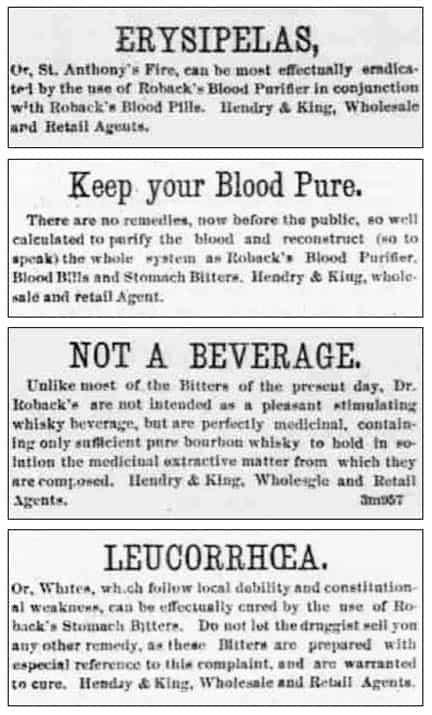
Hendry & King advertisements in the same paper for Roback’s products – Ashtabula Weekly Telegraph, May 30, 1868
In January, 1871, Ephraim L. King, and others, organized a colony in Ashtabula, Ohio, for the purpose of locating a town in Kansas. The King group traveled a thousand miles over the State, and were returning homeward without having made a location, when they came into McPherson County, and decided upon the site of King City. Both Hendry and King relocated here. By June, 1872, the town contained twenty-five houses but would not last.
Read about other city Mayors who sold bitters:
The Honorable Stephen Buhrer and his Gentian Bitters
The unlisted Yaupon Bitters – Norfolk, Virginia
Hiram A. Hendry
Kansas and Kansans: Volume 5
Alexander Sutherland Hendry, who for more than a quarter of a century has practiced law at McPherson, is a member of the Hendry family which was so conspicuously identified with the early history of this section of the state. His father (Hiram A. Hendry) was one of the founders of the Ashtabula Colony and for years was prominent in the public and business life of McPherson.
His father was the late Hiram A. Hendry, born at Jefferson, Ohio, in 1837, son of Samuel A. Hendry, likewise a native of the same section of Ohio. Hiram Hendry had a college education, and at the age of twenty-two years took up the profession of pharmacy at Ashtabula, Ohio. His business and professional partner was Doctor King. In 1871 the Ashtabula Colony was organized in the Hendry and King Drug Store. Doctor King was sent by the organization to Kansas for the purpose of viewing a location where the members of the colony might settle, secure lands, and introduce the influences and ideals represented by the organization. Doctor King favored the conditions in McPherson County, and in 1872 the colony arrived, each of its twenty-five or thirty members securing government land in King City Township, in the central part of McPherson County.
Hiram Hendry was very active in the colony’s affairs from the beginning and one of its official members. In 1872, when the McPherson Town Company was organized, he became its secretary, and held that office until the company was dissolved. From participation in the affairs of the colony his interests became widespread so as to include both the town and county. He was one of the charter members of the Congregational Church of McPherson. He was also a Mason and a republican, though never a seeker for public office. The death of this honored pioneer occurred at McPherson November 20, 1907.
He married May 22, 1864, at Mansfield; Ohio, Miss Julia M. Sutherland, second daughter of Dr. A. and Maria (Bowland) Sutherland, who were natives of Pennsylvania. Mrs. Hendry was born at Mansfield, Ohio, and died at McPherson, Kansas, September 7, 1901. She was active in the Congregational Church all her life. To this pioneer couple were born three children, two sons and one daughter: Alexander Sutherland; Harry Sutherland, who was born February 22, 1867; and Ada E. Hendry, who is now city librarian of McPherson.
Ephraim L. King
From the Ashtabula Standard, March 19th, 1886
THE CITY MOURNS
The Angel of Death Calls Suddenly, and Dr. E. L. King Peaceably Joins the ‘Silent Majority’ – The Community Inexpressibly Shocked by the Sad News. – Mrs. King Prostrated by the Great Shock.
The community was inexpressibly shocked Friday morning by the announcement that Dr. E. L. King had on Wednesday, died suddenly at Tampa, while on his way to Cuba with his son, of neuralgia of the heart. At first the report was regarded as a mere rumor but was soon sadly confirmed by Mrs Sanborn who had received a telegram from Will King conveying the sad tidings, and saying that the remains would be followed home as soon as Mrs King, who was completely prostrated by the shock was able to travel.
Dr. King was born in Brownsville, Pa., in 1830. He was married at Erie, in 1854 to Miss Mary Sanborn who with one son survives him. A beloved daughter who was the pride of their heart and who they have never ceased to mourn died several years ago and now lies buried in our beautiful Chestnut Grove. The Doctor received his education at Allegheny College, Meadville. He resided for a time in Winona Co, Minn., removing from there to Monongahela City, Pa, afterwards he was for a time a professor of surgery in the old Erie street Medical College in Cleveland, from there he came to Ashtabula in 1865, where he has since lived with exceptions of winters spent at his sunny home in Florida. He has been twice elected Mayor of this city, has been for many years President of the Board of Education. He was one of our best known and highly respected citizens, and loved and revered by both rich and poor. His services were always ready at the humblest call, to the poor and needy he was always a friend in distress, giving them the same kindly care and considerate treatment with no hopes of earthly renumeration that he did his richest patients. He was a great hearted man; a beloved physician; a Christian gentleman; a loving husband; a kind father. His virtues it woud be impossible to enumerate, his memory is precious and will be enshrined in the hearts of all who knew him. The heartfelt sympathies of all go out to the stricken widow, the bereaved son. May God in his infinite compassion lovingly sustain them in the midst of the great cloud which has suddenly overshadowed their lives.
The body reached this city Monday afternoon and was immediately placed in the receiving vault at Chestnut Grove cemetery, where it will remain till Mrs King is able to come home when the funeral will be held, Dr Will remained in Florida with his mother. Owing to the absence of the family we are able to get only meager details of the Dr’s life and death. At a later date we shall give a more complete report and correct any mistakes we have made in the above hastily prepared article.
EPHRAIM L. KING, M. D., was born Feb. 17, 1830, near Brownsville, Pa., and died March 10, 1886 at Tampa, Florida, of neuralgia of the heart. After his marriage to Miss M Sanborn, of Erie, he moved with his wife to Winona, Minnesota, where he was elected sheriff, and then to the lower and upper house of legislature, where he was foremost in sustaining and carrying into effect the great educational system which lifted that state into its present prominence in the nation. Returning to Pennsylvania he completed the study of medicine. On his return home, he was appointed examining surgeon for his district.
During the fall of 1865 he came to Ashtabula, where with the exception of four winters spent in Florida, he made his permenant home. In this city he was twice elected mayor, and for twelve years served as a member of the Board of Education, most of the time as president. In the midst of his busy professional life he took up the study of law, and in 1878 was admitted to the bar as an attorney. As a physician he took his place in the front rank; his services were as fully at the comand of the poorest family. as at that of the rich. He is mourned and missed, not only by his wife and son, but by hundreds of families in our midst. He was a man of strong convictions, never substituting policy for principle. His religous creed and life began in childhood. He was born of Methodist parents, and manhood found him a profound believer in devine revelation. Like his parents he accepted and endorsed fully all the doctrines and usages of the Methodist Episcopal Church. During 1863 he went forward to the altar as a seeker of religion. Finding no relief for his anxious soul he went to his office and threw himself into the arms of the all powerful Savior, and found pardon and acceptance with God. He at once united with the church and took his place among her active workers as steward and Sunday school superintendent. His medical practice so completely filled all his time that he at last found it necessary, as he thought, to give up his active church work. The absorption of all his strength in professional duty, he at last realized as a great mistake. The last months of his life witnessed a great change. His mind and heart turned again to the ardor of former years to the holy themes and hopes of the Christian religion. Death came unexpectedly, without a moment’s warning, leaving his home desolate, save the tender memories of the fading past.
Dr E L King, ex-mayor of Ashtabula, Ohio, and son of Josiah King, of Perry
township, Fayette county, Pa., died March the 10th, 1986, at Tampa, Florida, of
neuralgia of the heart. Dr King was born on the Carson Farm near Perryopolis
and was raised in Perry township; received his education at Meadville, and in
1849 or 50 went to California in search of gold. Returning in 3 years he
married Miss Mary Sanborn, of Erie, Pa., and moved to Winona, Minnesota, wher he
represented in turn both branches of the legislature after which he returned to
his native county and completed his medical education under the preceptorship of
his brother-in-law, Dr S B Chalfant, of Uppermiddletown, Pa., graduating at the
medical department of the Western Reserve college. He then located at
Monongahela City, Pa., where he enjoyed a lucrative practice for several years,
when he moved to Ashtabula, Ohio, where he built up a practice which lead all
his competitors. But constant application to his profession told on his
physical system and compelled him to seek a home in the south during the winter
season, consequently he had been making his home for the past five years at
Orlando, Florida, during the winter. On March 9, 1896, he, in company with his
son, Dr W S King, left his wife and his home for a pleasure trip to Key West and
Cuba, in unusually good health for him. They reached Tampa the same evening and
had to wait until the next day for a vessel. During the night the Dr suffered
from neuralgia of the stomach and in the morning when about to continue their
journey he suddenly died without a word or any warning. His remains were
embalmed and expressed to Ashtabula, Ohio, where they were interred on the 22nd
and the large attendance at his funeral indicates the esteem in which they held
him. Dr King was widely known in Fayette county and his many friends sympathize
with his aged father in his bereavement.
Ashabula Colony and King City
In January, 1871, E. L. King, president, John W. Hill, vice-president, J. U. Fellows, secretary, and J. R. Williams, treasurer, organized a colony in Ashtabula, Ohio, for the purpose of locating a town in Kansas. Messrs. E. L. King, John W. Hill and Smith Edwards, were appointed a locating committee. They traveled a thousand miles over the State, and were returning homeward without having made a location, when they came into McPherson County, and decided upon the site of King City. The locating committee returned to Ohio, and about the last of May, the president of the company and about twenty-five others, started for Kansas. By June, 1872, the town contained twenty-five houses, and it is probable that if the tier of townships had not been struck off from the southern part of the county, King City would have obtained the county seat. When this was accomplished, however, in the winter of that year, its fate was a foregone conclusion. King City was surveyed by County Surveyor J. D. Chamberlain, in February 1875, it being located upon the west half of the northwest quarter, and the west half of the southwest quarter of Section 26, Township 20 south, of Range 3 west of the sixth principal meridian. The city is now virtually defunct.
‘On June 22, 1871,’ says N. S. Hoisington, ‘I came to what is now known as King City. When I arrived at the woods on Turkey Creek, where the Ashtabula colony had stopped, I found tents, covered wagon boxes, and shanties in which were also a few people who were not natives of Ohio. During the night of my arrival I experienced one of the most violent storms of wind, rain and hail I ever witnessed. The shanty in which I was sheltered, with its inmates, was nearly blown down the bank. Every man during that night was busy holding on to his tent poles. H. D. Fellows were (sic) the proprietor of the shanty in which I was housed, his boarders furnishing the provisions. Himself, N. S. and D. B. Hoisington, and D. D. Carpenter were all camped together. In Norman Allen’s tent to the south were Mr. Allen, Mrs. Mertz (cook), Miss Mary Allen, Charles Allen, and N. D. Allen. In William Morgan’s tent to the northwest were the proprietor, Jeff Beales, and William Firkey (?). West of Norman Allen’s tent was that owned by John Sample, which was occupied by himself and wife, Nellie Sample, and John Drake. L. B. Carr and R. B. Holbrook lived together in a covered wagon box, just on the southwest. Near the old road which led to King City were Albert G. Smith and ______ Gilotte, who used to run a breaking outfit, and they turned over a good many acres of sod in and around King City. Jack Thomas, who married Norman Allen’s daughter, was also one of these early pioneer’s – and a jolly fellow who kept us all good natured. Our camp was just fifteen miles from the Little Arkansas River. A mile and a half north was the ‘Brickyard Boarding House’, where lived the proprietor of the yard, William Nelson, and his family and ‘hands’, of which I was one. The brick, however, proved to be of no use outside a building, since the first rain that come would wash them all to pieces. A spot one-half a mile from the camp was selected as the site of King City. George Crissy built the first store and did a flourishing business in groceries, provisions, etc. The building was afterwards moved to McPherson Centre. Across the street (just 150 feet) R. O’Dell built a hotel, and across the way from the hotel D. B. Hoisington had his blacksmith shop. South of Crissy’s store Norman Allen, of Michigan, built the first residence, and north of the hotel Charles Anderson built another house. D. D. Carpenter, John Carpenter, Mr. Bonnell and others afterwards built residences, and Dr. S. S. Gregg held forth as a physician in a little office between the blacksmith shop and Mr. Carpenter’s house. These were all the buildings on Main street. On the street east of Main Charles Zang built a house and storeroom, and George Galvin and Harry Morris also made some improvements. South was another hotel built by William West and Fred. Albright. South of this was another residence belonging to Mr. Camp, and south of Norman Allen’s place was a house which had been moved into town by Barney Reichard. L. N. Holmberg also moved a building into King City. He, with S. E. Granger, soon started a good general store. Charles Anderson followed with a few groceries and agricultural implements. After a time John W. Hill and H. A. Hendry built a large store and put in a stock of drugs and medicines. Overhead was the public hall in which Harvey Williams organized the first Sunday school, and in which the village school was also taught. Old Father Shelly used to preach in William West’s hotel once every two weeks. * * After the two tiers of townships were taken from the south of McPherson County, however, and the county seat moved to McPherson Centre, King City fell to pieces.’
Source: William G. Cutler’s History of the State of Kansas 1883
Ashtabula, Ohio
The site of Ashtabula was settled in 1803 and incorporated in 1891. The city contains several former stops on the Underground Railroad which was used to convey African-American slaves to freedom in Canada in the years before the American Civil War. Among the stops is Hubbard House, one of the handful of termination points. Ex-slaves would reside in a basement of the house adjacent to the lake and then leave on the next safe boat to Canada, gaining their freedom once they arrived in Ontario. Its harbor has been a large ore and coal port since the end of the 19th century and continues to be to some extent with a long coal ramp draping across the horizon in the current harbor and the ore shipments unloaded from lakers that is sent down to the steel mills of Pennsylvania.
Many newcomers to Ashtabula in the late 19th and early 20th centuries were immigrants from Finland, Sweden, and Italy. Ethnic rivalries among these groups were once a major influence on daily life in Ashtabula. A substantial percentage of the current residents are descended from those immigrants. The population in the City of Ashtabula grew steadily until 1970, but has declined in recent years. [Wikipedia]

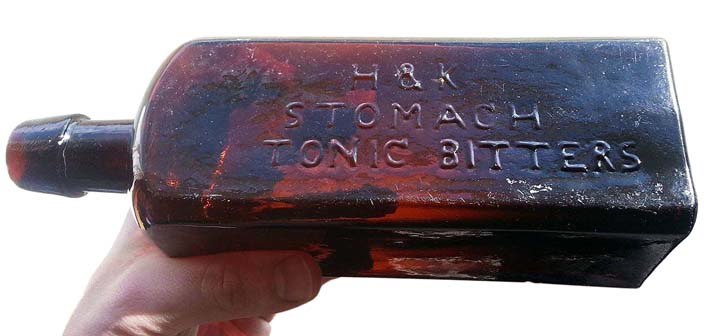
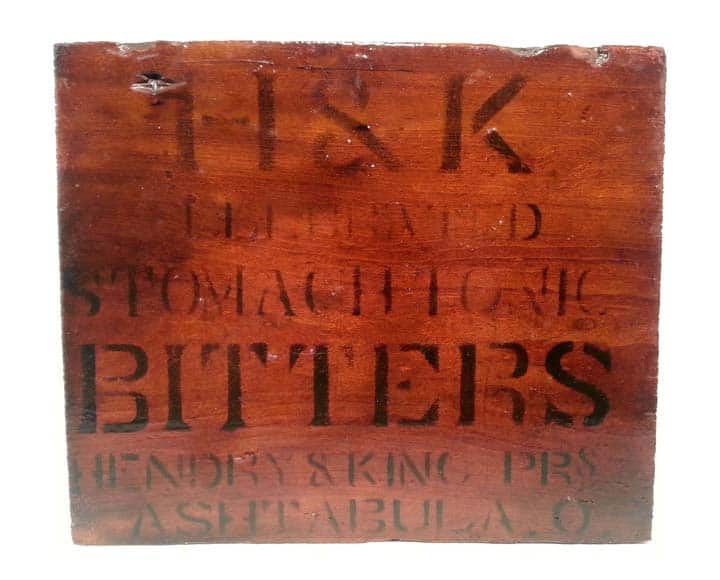
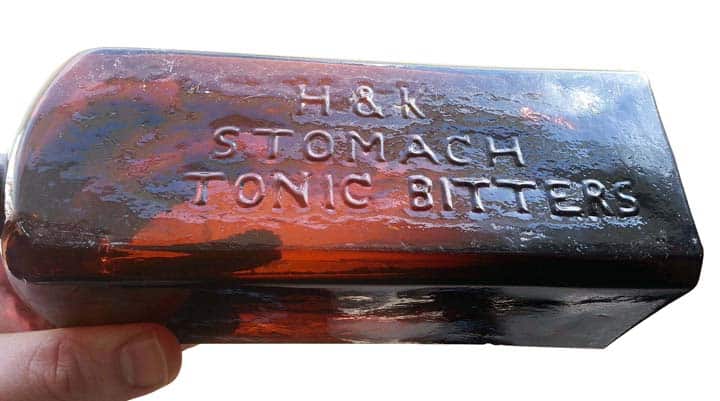
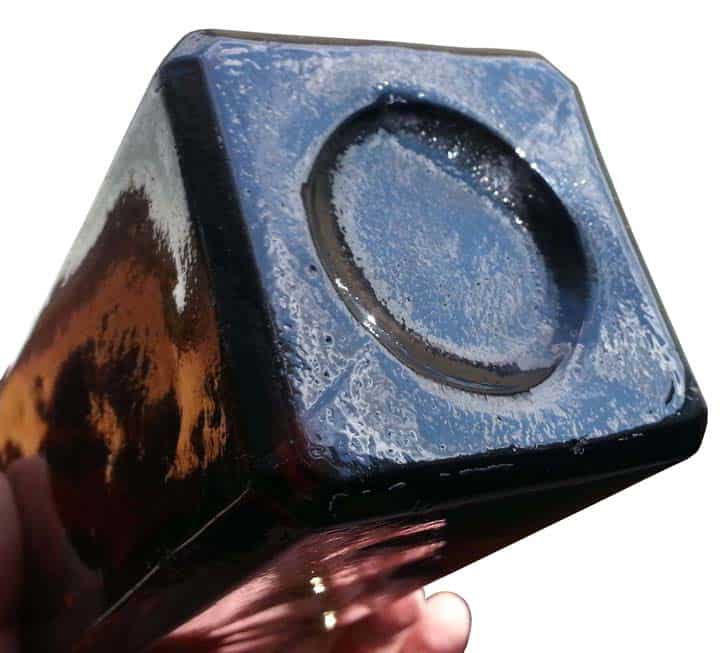

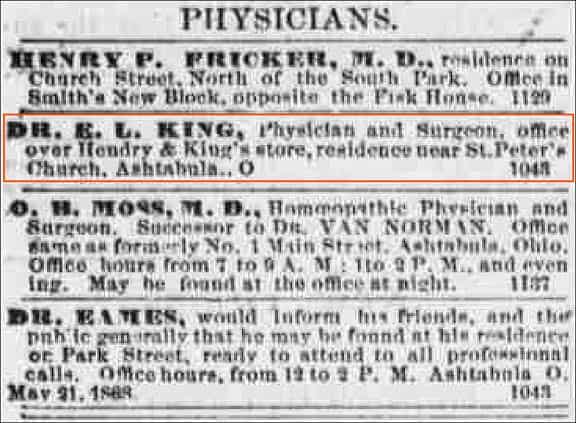






Great Bottle Matt. I remember diging privys with the Cleveland gang back in the 70s and I think Don Dzuro dug a panel with Ashtabula on it. It is in the Ohio Bottle Book I’m certain. If you want another one Matt you better dig a privy in Ashtabula. . Best Regards, Gary